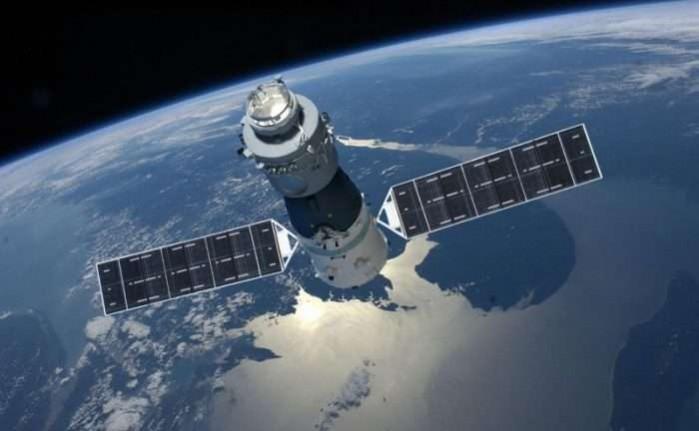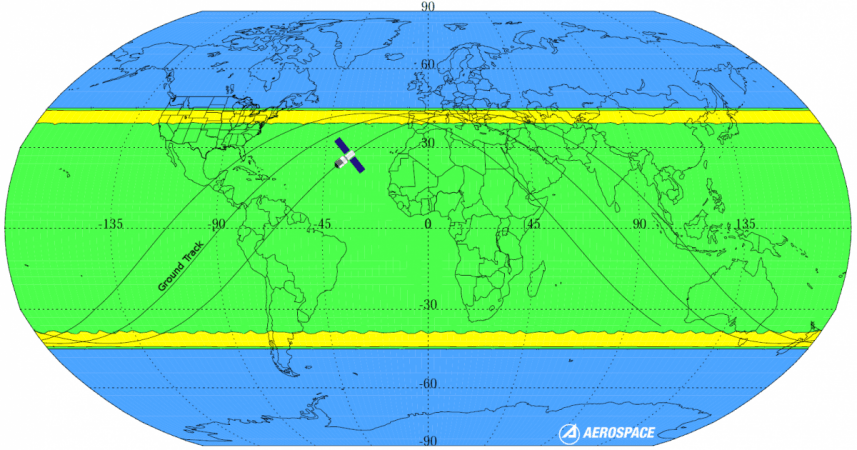
- The odds of Tiangong-1 crashing in Michigan are "very, very small," Dr. Lauren Woolsey, professor of astronomy and physics at Grand Rapids Community College said
- Tiangong-1 weighs 8,500kgs, and it was launched in 2011
- China lost control of Tiangong-1 in 2016, making the space station's re-entry a free fall
- Tiangong-1 carries highly-toxic and corrosive fuel called Hydrazine
- The chances of Tiangong-1 hitting anyone on Earth are one in a million
- When Tiangong hits the Earth's atmosphere, there will be visible streaks in the sky lasting up to a minute
The European Space Agency (ESA) and the US' Aerospace Corporation are monitoring the freefall of China's first space station – Tiangong-1 – which is only a few weeks away. For both agencies, it is hard to predict the exact location of Tiangong-1's crash, but they've narrowed it down to a few probable countries.
The 8.5-tonne (more than 3,200 kilograms) unmanned module is expected to crash-land on Earth anywhere from March 29 to April 9, 2018. This is a shorter timeline compared to what the ESA and Aerospace Corporation had predicted earlier. But the bigger question is the crash location of the space station.
According to the Aerospace Corporation, the uncontrolled Tiangong-1 could hit anywhere in the areas within between 43-degrees north and 43-degrees south latitudes. The areas with the highest probability of impact include the American state of Michigan, northern China, central Italy, northern Spain, the Middle East, New Zealand, Tasmania, South America, southern Africa, and northern states in the US.

Going by the crash zone area marking of the 43-degrees north and 43-degrees south latitudes, it is also possible that the space station could hit Spain, Italy, Turkey and India.
Should you take shelter?
If you are residing in one of the areas where the Tiangong-1 is likely to hit, there's no reason to panic. The chances of the spacecraft crashing anywhere near you or hitting you are one in a million. When the space station hits Earth's shielding atmosphere, most of it will be destroyed and only around 40 percent of the mass could slip through.
The chances of you getting hit by Tiangong-1 are equivalent to getting hit by lightning. So whether you're in India or any other part of the world, there's very little reason to panic.
A word of caution
Even though you can eliminate the risk of being hit by China's Tiangong-1, the toxic and corrosive fuel called Hydrazine aboard the module is quite dangerous.
Even short exposure to the highly toxic material can result in irritation of the eyes, nose, and throat as well as dizziness, headache, nausea, pulmonary edema, seizures and even coma, the United States Environmental Protection Agency has warned.

China launched Tiangong-1 in 2011 and it is referred to as the "Heavenly Palace." While the space lab was expected to end its operation in 2013, the Chinese space agency decided to extend its lifespan for a few more years. But during this period, China lost control of the space station.
There have been other crash-landings of satellites across Earth, such as NASA's 77-tonne Skylab in 1979 and the Soviet Union's 20-tonne Salyut 7 space station in 1991.









